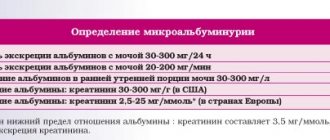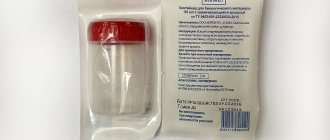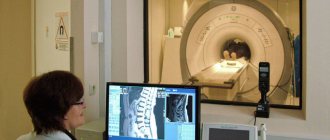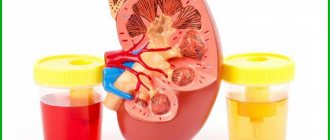In almost any visit to a doctor, clinical tests are prescribed to the patient to make a correct diagnosis, as well as to display a complete picture of the body’s functioning. One of them is a biochemical urine test, which is used to timely detect the onset of serious diseases, as well as to clarify a previously made diagnosis.
Correct interpretation of the indicators of such an analysis is important not only for specialists, but also for the patients themselves. Based on this examination, the doctor will be able to prescribe timely and adequate treatment, which will help avoid unnecessary and serious complications.
But in order for the analysis results to be more accurate, you need to know how to correctly collect material for such a study.
Preparatory stage
Before taking the test, certain preparation is necessary, which includes avoiding drinking alcohol, avoiding stressful situations and physical activity. It is recommended to refrain from eating foods that cause urine coloration. It is advisable to minimize the amount of sweet, fatty and spicy foods.
If you are taking medications, you must inform your doctor about this, since some drugs distort the final results.
You should avoid sexual intercourse 3 days before the procedure. Women are prohibited from donating urine during menstruation.
Biochemical urine analysis
A very important point in this procedure is compliance with simple but quite important rules, on which the result of the tests will directly depend.
The first thing you need to know when preparing material for a future study is that urine collection must be performed once a day (daily urine). This can only be done correctly in the morning, immediately after sleep. It should be remembered that you should not drink or eat before collecting urine. Quite often, for a more accurate diagnosis, doctors practice parallel diagnostics and prescribe a similar blood test, which is also taken in the morning on an empty stomach.
When a doctor prescribes a biochemical analysis, the doctor must tell the patient how to collect material for the study, even if the person is familiar with this procedure firsthand. Before the analysis, you should review your diet and balance it so that it does not include alcoholic beverages. You should also avoid fatty, spicy and salty foods for a while, which interfere with kidney function; as a result, the analysis may be incorrect. In order to preserve the color of urine, you should refrain from foods that can change it, these include beets, blueberries, asparagus, etc., in general, everything that in nature has a persistent and bright color.
In the case when the patient is taking medications whose effect is to normalize the function of the bladder, and antibiotics, the time of taking the test should, if possible, be postponed until the moment of stopping the intake or stop taking them for a while and get tested. One day is enough to cleanse the body of drug residues. In order to correctly interpret the results, if a patient takes vitamins or any other medications that were not prescribed by the attending physician, the doctor should certainly be notified about this. If you miss this point, the effect of drugs on the composition of urine may be such that the doctor makes an incorrect diagnosis.
Particular attention to the collection of material for research should be given to women who have started having monthly discharge. During this period, you should refrain from taking tests; if this is not possible, then you must use tampons when collecting urine so that menstrual fluid does not get into its composition.
Immediately before collecting urine, hygiene procedures for the intimate area should be carried out; using regular soap will be sufficient. Other chemicals found in cosmetics may also affect test results.
Biological material must be handed over in clean containers. You can purchase a sterile container for this purpose at any pharmacy. If it is not possible to purchase a container, then you can use any clean container, pre-washed and dried. It is worth taking care of the presence of a tight-fitting lid.
A biochemical urine test is prescribed, the cost of which can be found on our website, for each person who comes for examination.
Rules for taking the analysis
The collection of biomaterial is carried out at home throughout the day, starting in the early morning. Urine is collected in special containers.
When collecting urine, you need to adhere to certain rules:
- Only a sterile container is used;
- the first morning urine is not collected;
- Before each urination, the genitals should be washed;
- no more than a day should pass between visiting the toilet and sending the biomaterial to the laboratory;
- All collected urine should be stored in the refrigerator.
When the daily urine is collected, it is combined, the volume is analyzed and about 50 ml is poured into a special container for analysis, which is often called a container. The jar indicates the total volume of urine and the patient’s parameters (in some cases, age is also written). After completing these manipulations, the collected material is sent to the laboratory.
You need to understand that only by correctly collecting the biomaterial will you be able to obtain reliable results.
The average price for a test in Moscow is 300 rubles (about the same price for a blood test). It is important to choose a good clinic for research, where professionals work and equipped laboratories are available.
Indications for clinical urine analysis
- Suspicions of pathologies of the urinary system.
- Suspicion of diabetes mellitus.
- Comprehensive diagnosis of any other disease.
- Preventive examination.
- Preparation for surgery.
- Observation during pregnancy.
- Evaluation of the effectiveness of the treatment.
- Assessment of the patient's condition after an illness (especially after acute infections).
- Monitoring the patient's condition while taking medications that have a toxic effect on the kidneys.
The process of deciphering the results
After the test, the patient is given a report indicating the amount of chemicals in the urine. Most often, the transcript is presented in the form of a table that includes three columns. The first contains the name of the indicator, the second contains the value in the patient’s urine, and the third contains the norm. Having studied the data present in the transcript, the doctor draws conclusions regarding the violations present and makes a definite diagnosis.
It is noted that the range of normal values varies depending on the hospital and laboratory in which the material was studied; this is not considered an error. Only the doctor can make a conclusion regarding whether the value is considered beyond the normal range.
Rules for collecting urine for analysis
Urine is collected in a special sterile container purchased from a pharmacy. For newborn children, urine bags are used. Before collecting a sample, it is important to thoroughly wash your genitals. It is recommended to collect the first morning urine. For reliable research results, a small volume of stream (the first 2 seconds of urination) must be released into the toilet, then place a container and collect 50-100 ml of urine into it. The edges of the container should not be pressed against the skin. It is advisable to deliver the collected urine to the clinic within 3 hours.
Considered indicators
A biochemical study of urine shows about 15 values, but only some of them play an important role:
- Urea. The normal value ranges from 333 to 587 mmol per day. Reduced levels indicate the presence of liver and kidney diseases. There are other explanations: vegetarianism, the recovery stage after acquired injuries, the active growth of the child. Elevated values are present during pregnancy (this is also not considered normal in pregnant women) as a result of excessive protein intake. In addition, exceeding the norm is a sign of diseases such as hepatitis, diabetes, inflammation in the urinary tract and other viral pathologies.
- Creatinine. The normal value for men is from 7.4 to 17.6 mmol/day, for women – from 5.5 to 15.9 mmol/day. Higher rates are deciphered as the presence in the body of problems with the functioning of the pituitary gland and thyroid gland, observed in diabetes mellitus. In addition, increased levels are typical with frequent consumption of protein foods or with frequent and intense physical activity. Reduced indicators are present in the presence of leukemia, serious disorders in the functioning of the kidneys and anemia.
- Uric acid. Exceeding the norm reflects the presence of a pathology such as gout. Reduced levels are observed in case of problems with metabolism or in case of poor kidney function.
- Microelements. This value includes several items: potassium, sodium, chlorine, calcium. In the case of an increase or decrease in potassium content, it makes sense to talk about disturbances in the functioning of the kidneys. Inconsistency of sodium with the norm indicates the presence of diabetes mellitus, pathology of the kidneys and adrenal glands. Elevated chlorine levels indicate a lack of fluid in the body, reduced values are a sign of problems with the kidneys and adrenal glands. Elevated calcium levels are a sign of osteoporosis; a decreased value indicates oncology, renal failure and rickets.
- Squirrels. Increased rates are caused by diabetes, HIV, allergies and various types of infections.
- Oxalates. The normal value does not exceed 40 mg per day. Increased levels in the absence of quality therapy provoke the formation of kidney stones. This clinical picture is also observed in diabetes mellitus.
In addition, the indicators of phosphorus, amylase and urate are studied.
With a correct assessment of the results of a biochemical analysis of urine, cancer can be detected in the early stages, thereby saving the patient’s life. That is why today, much more often, doctors have begun to recommend that patients undergo a biochemical urine test.
Interpretation of biochemical urine test
When analyzing urine for biochemistry, the following indicators are examined:
- the consistency of urine, if it changes, we can talk about the presence of various abnormalities or pathologies in the urinary system;
- uric acid, the presence of which in urine indicates possible joint diseases, the development of arthrosis or gout;
- protein, the presence of which can be used to judge the onset of the inflammatory process in the body;
- the amount of urine excreted per day, which can be used to identify the development of kidney diseases, as well as determine the presence of heavy metal poisoning in the body;
- the content of calcium, chlorine and sodium in the urine, the amount of which reveals kidney diseases, diabetes mellitus and metabolic disorders;
- potassium, the presence of which indicates possible hormonal imbalances.
Only the attending physician can correctly decipher these indicators, since the results of the analysis are influenced by many factors, in addition to the content of certain elements in the material being studied. These include:
- patient's gender;
- his age;
- disease history;
- current condition of the patient.
But some indicators determined by biochemical analysis of urine are of interest to the patient. After all, judging by them, you can determine the state of the body as a whole, and also understand what you should focus your attention on most. Here is a list of the most important indicators:
- Total protein found in the body. Normally, protein in urine ranges from 0 to 0.033 grams per liter. If its level is exceeded, this indicates the presence of infectious and inflammatory processes in the urinary system, kidneys or genitals. Also, a change in this indicator is possible in the presence of allergic reactions, autoimmune diseases, diabetes mellitus or myeloma.
- Uric acid. This is a breakdown product of purine bases, which, during normal functioning of the body, is almost completely excreted in the urine. The daily norm of this indicator is 0.4-1 grams. An increase in standards may indicate a high-protein diet, anemia, liver cirrhosis, the development of gout and other diseases.
- Amylase enzyme. This substance is produced by the salivary and pancreas, participates in protein synthesis and is excreted from the body in the urine. Its normal level in urine is from 10 to 1240 units per liter. Accordingly, exceeding the norm indicates the presence of problems with the pancreas or disruption of the salivary glands.
- Sugar level in urine. Normally, glucose in urine is 0.03-0.05 grams per liter. Exceeding the level indicates the occurrence of diabetes mellitus or the development of kidney disease.










